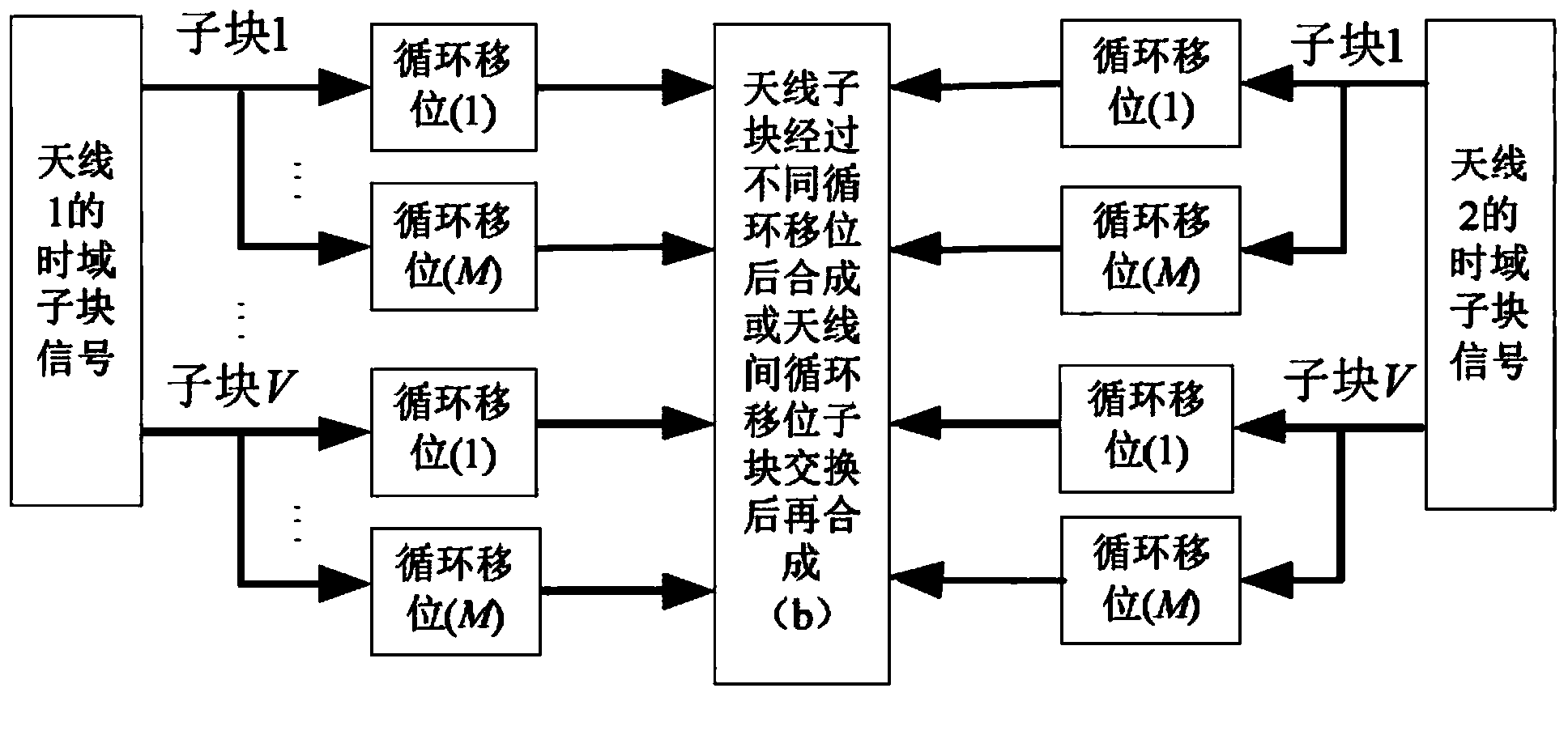PTS method for lowering PAPR of MIMO-OFDM system
A seed block and antenna technology, applied in the field of PTS to reduce the PAPR of the MIMO-OFDM system, can solve problems such as the increase of the system bit error rate, the reduction of the system spectrum utilization efficiency, and the increase of algorithm calculation complexity
- Summary
- Abstract
- Description
- Claims
- Application Information
AI Technical Summary
Problems solved by technology
Method used
Image
Examples
Embodiment Construction
[0039] The technical solution of the present invention will be further described below in conjunction with the accompanying drawings, but the content protected by the present invention is not limited to the following description.
[0040] A PTS method for reducing the PAPR of a MIMO-OFDM system, including a transmitting end processing process and a receiving end processing process, the transmitting end processing process is to group the antennas of the transmitting end, each two antennas are divided into groups, and each group is separately The antenna performs signal processing and calculations such as figure 1 As shown, it includes the following steps:
[0041] S101: The original frequency domain signal X obtained after baseband modulation and serial-to-parallel conversion of each antenna source bit i Carry out sub-block segmentation, the original frequency domain signal X of each antenna i Divided into V non-overlapping sub-blocks:
[0042] X ...
PUM
 Login to View More
Login to View More Abstract
Description
Claims
Application Information
 Login to View More
Login to View More - R&D
- Intellectual Property
- Life Sciences
- Materials
- Tech Scout
- Unparalleled Data Quality
- Higher Quality Content
- 60% Fewer Hallucinations
Browse by: Latest US Patents, China's latest patents, Technical Efficacy Thesaurus, Application Domain, Technology Topic, Popular Technical Reports.
© 2025 PatSnap. All rights reserved.Legal|Privacy policy|Modern Slavery Act Transparency Statement|Sitemap|About US| Contact US: help@patsnap.com



